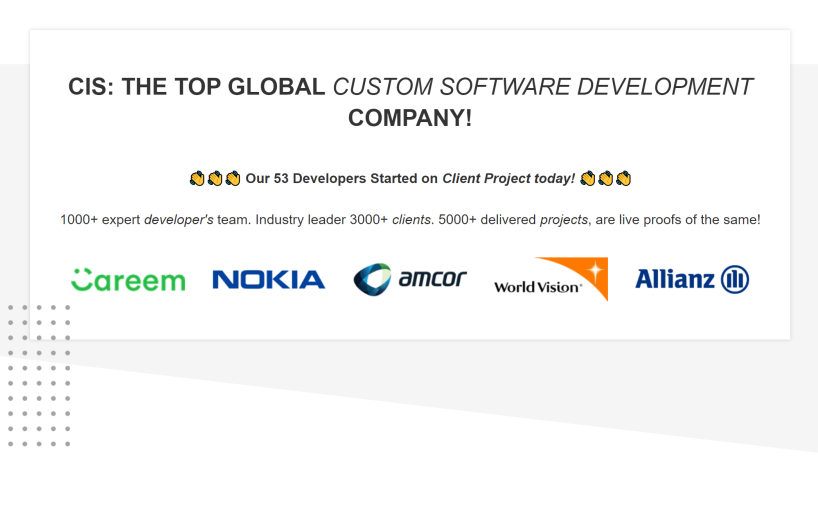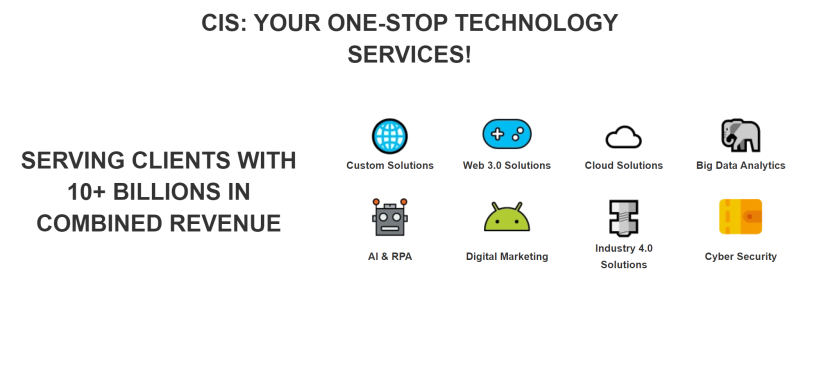Maximizing ROI: The Cost and Benefits of Adopting Sap For Healthcare And Life Sciences for Your Business
- SAP for Healthcare and life sciences - Detailed Analysis by Enterprise Solutions Experts
Request A Free Consultation - Why Use SAP For Healthcare And Life Sciences



Why Mid-size Companies and Enterprises needs SAP For Healthcare And Life Sciences:
SAP for Healthcare and Life Sciences provides mid-size companies and enterprises with the tools they need to better manage their healthcare operations. It enables them to quickly access patient data, optimize processes, reduce costs, improve outcomes, increase revenue, and ensure compliance with regulatory requirements. With SAP for Healthcare and Life Sciences organizations can gain visibility into their entire healthcare supply chain from end-to-end; this includes tracking materials from suppliers through production to distribution of finished products. Additionally it helps in improving collaboration between stakeholders such as providers, payers, regulators and patients. By leveraging predictive analytics capabilities within SAP for Healthcare and Life Sciences organizations can identify trends that enable them to make more informed decisions about care delivery or product development strategies.
Benefits of using SAP For Healthcare And Life Sciences in Mid-size companies and Enterprises:
1. Improved Efficiency:
SAP for Healthcare and Life Sciences helps streamline processes, improve data accuracy, and reduce costs by automating administrative tasks such as billing, claims processing, inventory management, patient scheduling, and more. This helps to free up resources that can be used in other areas of the business or organization.
2. Enhanced Collaboration:
By bringing together different departments within a healthcare organization or enterprise on one platform with access to real-time data, SAP allows teams to collaborate more effectively across multiple locations while staying connected through secure communication tools.
3. Increased Patient Engagement:
With solutions like SAP Cloud Platform for Health Care Professionals (HCPro), providers can better engage with patients by providing personalized care plans tailored to their individual needs based on real-time analytics from various sources such as medical records and lifestyle information gathered from wearables or mobile applications.
4. Advanced Analytics:
Using predictive analytics powered by machine learning algorithms embedded into the system's core architecture enable organizations to make informed decisions about patient treatments faster than ever before without sacrificing quality of care due to lack of accurate data insights in time-sensitive situationsDetailed Features of SAP For Healthcare And Life Sciences for Mid-size companies and Enterprises:
1. Clinical Data Management:
SAP for Healthcare and Life Sciences provides an integrated clinical data management platform that enables mid-size companies and enterprises to manage patient information, track patient outcomes, monitor drug safety and efficacy, analyze real-world evidence (RWE), and enable personalized medicine.
2. Regulatory Compliance:
This solution helps meet regulatory requirements by providing tools for clinical trial management, pharmacovigilance reporting, product safety monitoring, risk assessment & mitigation planning, as well as other compliance activities.
3. Supply Chain Optimization:
SAP for Healthcare and Life Sciences helps optimize the supply chain with features such as inventory optimization & forecasting tools; demand planning; logistics network optimization; supplier performance management; quality control & assurance processes; traceability of goods across the entire supply chain; analytics capabilities to gain insights into operations performance & customer preferences; etc.
4. Patient Engagement Solutions:
The platform includes solutions to help engage patients in their care journey - from appointment scheduling to telemedicine services - enabling healthcare providers to better understand individual needs while improving overall health outcomes through personalised care plans tailored specifically for each patient's unique circumstances or condition(s).
5. Business Intelligence & Analytics Capabilities:
With its advanced business intelligence (BI) capabilities powered by machine learning algorithms and AI technologies embedded throughout the system architecture - from predictive maintenance models to automated decision support systems - SAP for Healthcare and Life Sciences can help uncover hidden patterns in vast amounts of data generated from various sources (e.g., electronic medical records (EMRs), operational systems). These insights can then be used by mid-size companies/enterprises to make more informed decisions regarding resource allocation or product development strategiesRequest A Quote - Why Use SAP For Healthcare And Life Sciences
Who are the Users of SAP For Healthcare And Life Sciences:
The customers using SAP for Healthcare and Life Sciences include healthcare providers, life sciences companies, pharmaceutical manufacturers, biotechnology firms, medical device makers and other related industries.
How to ensure Data Security and Compliance with SAP For Healthcare And Life Sciences:
1. Implement an effective data security strategy:
Establish clear policies and procedures for managing sensitive health-related data, such as encryption of all stored and transmitted healthcare information, restricting access to only authorized personnel, and regularly auditing systems to detect unauthorized access or use.
2. Adopt best practices in system management:
Ensure that the SAP system is set up with proper authorization controls, user authentication protocols, audit logging capabilities, and other measures that help protect against malicious activities.
3. Leverage advanced technologies:
Utilize features like blockchain technology to provide a secure platform for storing patient records while also providing transparency into how those records are accessed by healthcare providers or researchers. Additionally, deploy artificial intelligence (AI) tools to automate processes related to privacy compliance requirements such as subject consent forms or HIPAA audits. This helps ensure accuracy and speed up the process of verifying compliance standards are met throughout the organization's entire network infrastructure.
4. Stay informed on regulatory changes:
Healthcare organizations must stay abreast of relevant regulations pertaining to their industry so they can adjust their systems accordingly when new laws come into effect-such as GDPR or HIPAA updates-or when existing rules change due to technological advances in healthcare delivery models like telemedicine services or mobile health applications (mHealth).How SAP For Healthcare And Life Sciences can increase organization Productivity, Agility, and Profitability:
SAP for Healthcare and Life Sciences can help organizations increase productivity, agility, and profitability by streamlining processes such as supply chain management, financial planning and analysis, customer relationship management (CRM), inventory control, order-to-cash cycle times, regulatory compliance tracking, analytics and reporting. It also provides access to real-time data from multiple sources so that healthcare professionals can make informed decisions quickly. Additionally, it helps reduce costs associated with manual processes by automating them. Finally, its predictive analytics capabilities enable organizations to identify trends in the market before they become problems or opportunities for growth.
Request A Quote - Why Use SAP For Healthcare And Life Sciences
How to Measure KPIs and increase Benefits of implementing SAP For Healthcare And Life Sciences in Mid-size companies and Enterprises:
1. Develop a clear understanding of the goals and objectives for implementing SAP for Healthcare and Life Sciences in your organization. Create key performance indicators (KPIs) that align with these goals, such as cost savings, improved patient care, or increased efficiency.
2. Track progress towards KPIs on a regular basis to ensure that the system is delivering expected results. This could involve collecting data from stakeholders across departments to measure how well the system is functioning at different levels within the organization.
3. Analyze any discrepancies between actual results and desired outcomes to identify areas where further optimization may be necessary or beneficial. This can help you adjust processes or training so that users are able to get more out of the system in terms of its benefits and capabilities over time.
4. Utilize feedback loops from customers and staff to gauge satisfaction with using SAP for Healthcare and Life Sciences systems in order to continuously improve user experience while increasing value delivered by the technology solution over time.
5 . Leverage analytics tools such as predictive analytics software or machine learning algorithms to gain deeper insights into usage patterns which can then be used for further optimization efforts if needed..
How SAP For Healthcare And Life Sciences can increase Employee Morale in your organization:
SAP for Healthcare and Life Sciences can increase organization employee morale by providing a streamlined workflow that simplifies processes, allowing employees to focus on more meaningful tasks. It also provides data-driven insights into the performance of the organization and its employees, giving them an understanding of their impact and helping them to feel empowered in their roles. Additionally, SAP for Healthcare and Life Sciences offers personalized tools that allow organizations to recognize individual contributions with rewards or recognition programs which can help boost morale.
How SAP For Healthcare And Life Sciences is Better than its Competitors:
SAP for Healthcare and Life Sciences is better than its competitors because it offers unique features that make it a powerful solution for healthcare organizations. It provides an integrated platform to manage patient care, clinical operations, financials, supply chain management, regulatory compliance and more. Additionally, SAP has developed industry-specific solutions such as the SAP Health Engagement Platform (HEP) which enables digital engagement with patients and providers through personalized health journeys. Furthermore, SAP's cloud-based solutions enable real-time data insights to support decision making in healthcare organizations. With these features and capabilities, SAP stands out from its competitors when it comes to providing innovative healthcare solutions.
Request A Quote - Why Use SAP For Healthcare And Life Sciences
Cost to Develop & Implemention of SAP For Healthcare And Life Sciences:
The cost of developing and deploying SAP for Healthcare and Life Sciences will vary depending on the size of the organization, the scope of implementation, and any customizations or integrations that may be required. Generally speaking, costs can range from $100K to several million dollars.
Why outsourcing implementation services for SAP For Healthcare And Life Sciences is better for Mid-size companies and Enterprises:
Outsourcing implementation services for SAP for Healthcare and Life Sciences is beneficial to mid-size companies and enterprises because it can help them take advantage of the latest technologies without having to invest in expensive infrastructure. Additionally, outsourcing allows them access to a larger pool of experts with specialized knowledge in this field, which can improve their overall performance while reducing operational costs. Outsourcing also helps reduce risk by allowing companies to focus on their core business activities instead of managing complex IT projects. Finally, outsourcing provides an opportunity for these companies to benefit from the scalability that comes with working with an experienced provider who understands how best to meet their specific needs.
Request A Quote - Why Use SAP For Healthcare And Life Sciences


